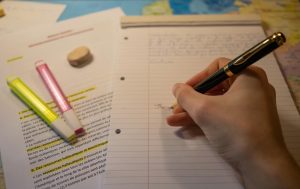To make a successful TOK exhibition, you need to plan and prepare. It makes a big difference if you understand the task at hand and approach it carefully, as I’ve learned as an experienced IB writer. The Theory of Knowledge (TOK) exhibition is more than just a task; it’s a chance to show how well you can think critically, reason about what you know, and connect it to things in the real world. Here are some of my best IB TOK exhibition tips and tricks to help you succeed.
What Is the IB TOK Exhibition?
The Theory of Knowledge exhibition is one of a kind and an essential part of the IB program. It allows students to show they understand how TOK ideas work in the real world. I’m sure this is one of the course’s most creative and personal parts because I’ve worked with so many students on their TOK presentations. Each student chooses three objects for the exhibition. These objects must be related to one of the given TOK concepts.
Here is a quick list of what you need to do:
- Pick a prompt from the list that IB gives you.
- Pick three objects that have something to do with your chosen prompt.
- Write a commentary about each item that explains how it links to the question and shows TOK concepts.
In light of the ideas you’ve learned in class, like knowledge, opinion, and viewpoint, the TOK exhibition asks you to think critically about things in the real world. Your objects must make sense and have a clear connection to the question. Students often make the mistake of choosing objects that are too general or don’t have any specific meaning for them.
One last tip: make sure your opinion is clear and to the point. Instead of trying to explain everything, focus on how your objects help you understand the TOK idea you’re investigating. It will help your exhibition stand out.

IB TOK Presentation Guide: How to Choose Your Objects?
This part is where things get tricky: picking out the proper objects. From what I’ve seen, the best approach is to choose things that are important to you and make sure they fit with the TOK structure. I always stress that a good item isn’t necessarily something fancy or complicated to understand but something that makes you think about something important. It should help you better understand the knowledge question you are answering.
Once, I had a student use a picture of their family. This may seem too simple initially, but it made the whole exhibition stand out when linked to a question about private and public information. The object was a solid way to show how our own experiences can change how we understand what other people know. I don’t think how pretty the thing is; how well you can connect it to the TOK ideas matters.
What Makes a Good TOK Object?
They often make the mistake of picking objects that have nothing to do with the question. To prevent this, here are some essential things to think about as you choose your objects:
- Does this thing help me answer a knowledge question?
- Can this thing be connected to multiple Ways of Knowing (WOKs)?
- Does this object make you think about things from different points of view?
The best objects let you see things from different points of view. When preparing TOK exhibitions, it’s important to think about how your item can connect to ideas like ethics, reason, or perception. A suitable object can help us understand how we know what we know and why these things may change how we understand knowledge.
Aligning Objects with TOK Prompts
It’s also crucial to match your objects with the TOK prompts. Choosing a topic that hits home for you is half the battle won. If you’re interested, the subject will be shown in your exhibition. For instance, if the question is about how technology changes and how people learn, ensure your item has a clear link to that idea. In this case, you can use a smartphone or old technology. It can lead to a conversation about how the things we use shape how we see the world.
This part is where I think TOK exhibition strategies come in handy. You need to plan how to connect your objects to the bigger picture of knowledge. You can’t just show an item; you have to clarify how it fits into the knowledge question you’re answering. One student made a strong case when they used an old map to talk about how we know what we know about geography by connecting the object to how we see things and what we know about the past. You may need to be able to make these links well for your exhibition to go well.
Get Help With Your Paper
How to Structure Your TOK Exhibition Commentary?
Once you’ve picked your objects, it’s time to work on the commentary. I often tell my students that the commentary is where the magic happens. It’s not enough to select interesting objects; you must explain why they matter. Also, remember that the TOK exhibition word count is 950 words.
Write a Strong Introduction
At the beginning of your TOK exhibition, you set the tone. From what I’ve seen, it’s essential to clarify why you picked the prompt you did and the objects you chose. You also set up the link between the objects and the knowledge questions here. Moving from your opening to your core analysis should feel normal, which will help your examiner understand how you thought about the question.
Connect Objects to the TOK Framework
One of the most important IB TOK exhibition tips I can give is to return to the TOK framework. To do this, you must connect your objects to Areas of Knowledge (AOK) and Ways of Knowing (WOK). For example, if one of your objects has something to do with history, consider how it fits into our ideas about the past. In my view, this way of writing strengthens your comments and shows that you understand the subject better.
Conclusion and Personal Reflection
Last, don’t forget to end your remark with a thought. Some students have lost points because they didn’t come up with a good ending. Write a summary of your major points and think about what you learned. This strategy shows that you can think deeply about what you know, which is what the TOK exhibition is about.
Key TOK Exhibition Strategies for Success
Planning is critical if you want your TOK exhibition to stand out. Too many students I’ve seen rush through the process because they think they can do things like pick out objects and write comments at the last minute. However, the most successful presentations were the ones that were carefully planned and thought out. You need to plan and approach each step with strategy and clarity. It’s not enough to just choose objects and write a description.
Time Management and Planning
In my view, time organization is one of the hardest things for IB students. Those planning the TOK exhibition don’t think about how long it will take to prepare everything. I always tell people to make a schedule so they have plenty of time to make changes. This way, you won’t have to rush through your comments the night before the due date.
This is an easy plan I tell my students to follow:
- Figure out what your TOK task is and start thinking of possible objects.
- Finish choosing your objects and begin writing your commentary.
- Ask teachers or friends for feedback, then make changes.
- Refine and polish your final commentary.
From my own experience, dividing the work into several weeks makes it less stressful and gives you time to think about your decisions and make any needed changes. A good time management plan is not just an idea; it’s a necessary part of a successful TOK exhibition.
Collaborate with Peers and Teachers
At one point, one of my students picked an object they thought was great, but when they got feedback, they saw that it wasn’t connected to the prompt. Helpful feedback can help you improve your commentary or objects, which will improve your exhibition.
- When working with others, don’t be afraid to ask questions like “Do my objects clearly connect to the TOK framework?”
- Describe the link between the thing and the knowledge question. Does what I said make sense?
- Is there anything I should change or add to my commentary?
You should be smart about how you use information because I believe it is very important.
Practice Your Presentation Skills
Finally, work on your presentation skills. Even though the TOK exhibition isn’t an official presentation, you should still be able to write and speak confidently about your thoughts. I always tell my students to review their points repeatedly until they can clearly say them. This includes both writing and speaking parts. Make sure your reviewer knows the links you’ve made between the objects and the information questions in your comments.
Final Thoughts and Takeaways
To summarize, a successful TOK exhibition requires careful planning and deep thought. As I’ve said many times in this piece, the keys to success are picking important objects, carefully organizing your comments, and asking for feedback. Make good use of your time and work on getting your ideas across quickly. With these tips from IBStudentHelp.com for the TOK exhibition, you’ll be well on your way to a great one.

Nick Radlinsky
Nick Radlinsky is a devoted educator, marketing specialist, and management expert with more than 15 years of experience in the education sector. After obtaining his business degree in 2016, Nick embarked on a quest to achieve his PhD, driven by his commitment to enhancing education for students worldwide. His vast experience, starting in 2008, has established him as a reputable authority in the field.
Nick's article, featured in Routledge's "Entrepreneurship in Central and Eastern Europe: Development through Internationalization," highlights his sharp insights and unwavering dedication to advancing the educational landscape. Inspired by his personal motto, "Make education better," Nick's mission is to streamline students' lives and foster efficient learning. His inventive ideas and leadership have contributed to the transformation of numerous educational experiences, distinguishing him as a true innovator in his field.

Grammar and Style Essentials for IB Essay Writings
The essentials of grammar and style are what make your thoughts get points in IB essays. Based on my work with IB students on TOK, Extended Essays, and Internal Assessments, I know that good thinking frequently doesn’t show through because of language.

Why Multiple Drafts Make for Better IB Essays?
Did you know that the whole drafting process teaches you more about writing than the final version ever will? Also, writing several drafts of your IB essays improves them. Each time you rewrite, you get a chance to refine your ideas and connect them in a new way.

Structuring a Literature Review for IB Extended Essays
It’s very hard to write and organize a literature review for an Extended Essay, especially if you want it to be clear, have good research, and meet IB standards. This part of the EE often determines whether it feels cohesive or completely disorganized.

What Are the IB TOK Essay Prescribed Questions for May 26?
If you’re an IB student, you may have seen the TOK essay titles for May 26. These six questions will help you write one of the most significant papers for your IB Diploma.

How to Write an Effective Abstract for IB Research Papers?
One of the most important parts of your IB research paper is the abstract, which gives readers a clear picture of your work. This guide shows you how to write an effective abstract that sticks out to examiners, properly describes your research, and gives your IB paper a more professional touch.

Can You Use Rhetorical Techniques in IB Essay Writing?
It’s likely that the person who wrote an essay that made you think, “Wow, that sounds powerful,” used rhetorical techniques. And the big question at this point is, can you use rhetorical techniques in IB essay writing?
